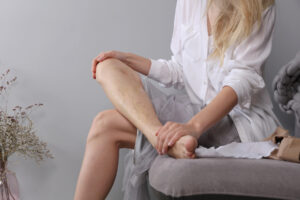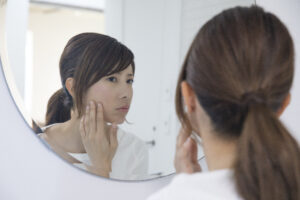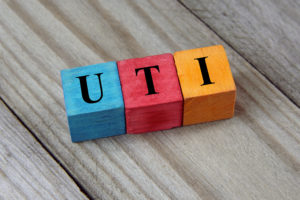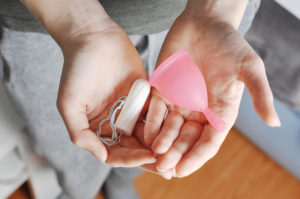By Iris Farrou
19 May, 2021
Women's Health
Best gyns in Buffalo, Best OB practices in Buffalo, Best OBGYN Groups in Buffalo, Buffalo OB-GYN, Buffalo OBGYN, Chouchani MD, WNY OB-GYN, WNY Ob-gyn doctors, WNY OBGYN, women's health
 One of the most common concerns of aging women is the appearance of varicose veins on their legs. Varicose veins and spider veins are swollen, twisted veins that are mostly found on the legs and appear more in women because pregnancy tends to increase the risk of having them. Additional factors are older age and obesity. Both types of veins are usually painless, don’t cause health problems, and can be treated for cosmetic purposes. Some people report experiencing aching pain and discomfort, while varicose veins sometimes lead to more serious problems.
One of the most common concerns of aging women is the appearance of varicose veins on their legs. Varicose veins and spider veins are swollen, twisted veins that are mostly found on the legs and appear more in women because pregnancy tends to increase the risk of having them. Additional factors are older age and obesity. Both types of veins are usually painless, don’t cause health problems, and can be treated for cosmetic purposes. Some people report experiencing aching pain and discomfort, while varicose veins sometimes lead to more serious problems.
What is the difference?
Varicose veins are red, blue, or skin colored and seem to have a rope-like texture, while they also tend to cause the skin to bulge out. They are often on the thighs and calves, as well as the inside of the leg near the ankles and feet. During pregnancy they can also happen in the lower pelvic area and the buttocks.
Spider veins are smaller than varicose veins, and predominantly red. They can be seen under the skin, but they do not make the skin bulge. They can from tree-like designs or look like spider webs (hence their name). Most commonly, they are seen on the legs and face.
Symptoms
Other than simply appearing under your skin, you may experience an achy feeling on your legs, muscle cramping, or swelling on your lower legs. Another sign may be worsened pain after either sitting or standing for an extended period of time. Itching or skin discoloration around veins may also be indicative of varicose veins forming.
Risk Factors
- Age: the older you get, the more chances there are of getting varicose veins. Wear and tear on the valves of your veins is normal with age, and eventually the blood may collect back into your veins instead of flowing up to your heart.
- Sex: as stated above, women are more likely to develop varicose veins. Hormonal changes may play a role, as they tend to relax vein walls. Additionally, hormone treatments increase the risk of varicose veins.
- Pregnancy, family history, and obesity are other risk factors you should take into consideration if you are worried about varicose veins in older age.
Prevention
Though you cannot completely prevent varicose or spider veins, as they have to do with normal wear and tear of your vein valves and strength of muscles, there are some ways to minimize the risk of getting them or avoid getting more. Improving your circulation and muscle tone through exercising, watching your weight, lowering salt intake, avoiding high heels, elevating your legs, and avoiding sitting down or standing up for a long time are all ways which may help reduce the risk of varicose veins.
More
By Iris Farrou
08 Apr, 2021
Lifestyle Tips, Mental Health
Best gyns in Buffalo, Best OB practices in Buffalo, Best OBGYN Groups in Buffalo, birth control, Buffalo OB-GYN, Buffalo OBGYN, Chouchani MD, mental health tips, WNY OB-GYN, WNY Ob-gyn doctors, WNY OBGYN, women's health
The conversation around the side effects of hormonal birth control and contraceptive pills on mental health has been around for a while: you may have heard women recounting their negative experiences with heightened depression symptoms, or mood swings, when switching contraceptive methods. Though personal experiences are not medical research, they do warrant attention.
In 2016 a Danish study of more than 1 million women, which focused on analyzing nationwide health records, showed that women using hormonal birth control were more likely to be treated for depression. On the other side, studies conducted in the US and Finland have showed that hormonal birth control users report less symptoms of anxiety and depression. Though just what effect hormonal birth control can have on mental health differs, one thing is for sure: it does affect it.
Hormones and Mental Health
Though there are no mental health risks directly associated with the use of contraception, we do know hormones—and hormone imbalances—can have an impact on mental health. To start with, women are twice as likely as men to suffer from depression: this is a difference that starts in adolescence due to the changing levels of estrogen.
During the follicular phase, which is the time between the start of a period and ovulation, estrogen levels are high. However, individuals with depression demonstrate lower levels of estrogen at that time. Hormonal birth control is likely to affect the natural levels of hormones in someone’s body, and therefore cause mental health changes.
Types of Hormonal Contraception and their Effects
Implant
There are two types of implants: one containing the progestin etonogestrel and another containing the progestin levonorgestrel. Results of the Danish study concluded that use of the etonogestrel implant led to higher use of antidepressants, especially for teens. People using that for two years have also reported mood swings and depression attributed to the implant. The risk for depression seems to heighten with the etonogestrel implant, but studies remain somewhat inconclusive.
Hormonal IUD
The Danish study on hormonal IUD showed that adolescent IUD users were more likely to be treated for depression than adult IUD users. However, a Finnish study suggested that women using this method were just as likely to showcase symptoms of anxiety and depression as women who were not using it. Like the implant, there is some evidence that IUD increases chances of depression but no direct conclusion.
Pills
Combined Oral Contraceptives (COCc) contain both synthetic estrogen and progestin. Though the Danish study found that users of COCs aged 16-31 were more likely to be prescribed an antidepressant, several other studies have shown that birth control users are not more likely to have symptoms of depression. However, people using COCs for reasons other than birth control have been found more likely to have depression.
There are several other hormonal contraceptive methods that can potentially affect mental health, but the three examined above are the most commonly used. Results may remain inconclusive, but if you are taking a hormonal contraceptive method and you experience unusual symptoms, you may consider consulting your doctor or healthcare provider.
More
By Iris Farrou
19 Mar, 2021
Queer Health, Sexual health, Women's Health
Best gyns in Buffalo, Best OB practices in Buffalo, Best OBGYN Groups in Buffalo, Buffalo OBGYN, Chouchani MD, queer health, WNY OB-GYN, WNY Ob-gyn doctors, women's health

Many of the gynecological health issues associated with heterosexual women are also concerns of queer women, including homosexual and bisexual women. However, because queer women are not generally concerned with mainstream gynecological health issues, such as pregnancy and contraception, they may find it difficult to receive adequate support from healthcare professionals, or access unbiased and non-discriminatory resources. It should also not be forgotten that minority populations tend to experience higher levels of social anxiety, stress, and depression. As such, the higher levels of mental healthcare that queer women need, along with the lack of resources targeted specifically to them, places them at a precarious position when it comes to sexual and gynecological health.
Gynecological Care Tips
While the following tips and areas of concern to be noted may not apply to everyone, as sexual health depends on sexual preferences, family history, overall health, and health among other factors, these have been identified as the most common areas of concern among queer women.
- Bacterial Vaginosis: Lesbian women that seek care for bacterial vaginosis at women’s health clinics have been found to be twice the rate compared to heterosexual women. Bacterial vaginosis has been found to be associated with a higher number of female sexual partners, though its transmission mechanism is only hypothesized to be oral sex.
- Yeast Infection: Though not identified as a sexually transmitted infection, yeast infections can occur through direct skin contact with someone who harbors the organism. As far as lesbian sexual relations are concerned, this transmission may occur due to vulva-to-vulva connection, or through the transmission of the bacteria from the fingers to the vagina.
- Herpes, HPV, Hepatitis: Common as these are, they are also present in queer women’s intimate relationships—vaccinations against these infections, as well as practicing safe sex and maintaining personal hygiene and health minimize the risk of contraction.
Mental Health Care Tips
Sexual minorities do not only experience higher levels of stress and depression, but they also experience social discrimination and isolation. This can lead to a conglomeration of mental health issues, but most notably it tends to lead to queer women remaining silent when it comes to domestic abuse and intimate partner violence.
This silence is primarily associated with the general misconception that abuse is present only in heterosexual relationships, and it is also attributed to fear of discrimination. Though the discrimination and the experienced violence may be directly related, as queer women have been found to experience mental, physical and verbal abuse that targets their sexual orientation, it may also be indirect. Lack of training in part of service providers or discrimination in shelters create more difficulties for queer women who seek support against intimate or domestic violence, which in turn leaves them in abusive situations for a longer period of time.
It should also be taken into consideration that the fear of being “outed,” not receiving adequate support from health providers, friends, and family, or the fear of social and intimate isolation are factors that contribute to the higher rates of violence and abuse in queer women’s relationships. If you are experiencing partner violence, consider reaching out for support to a trusted individual, or conducting research on domestic violence support that may assist you in creating a plan to leave the abusive environment.
More
By Iris Farrou
26 Feb, 2021
Lifestyle Tips, Sexual health
Best gyns in Buffalo, Best OB practices in Buffalo, Best OBGYN Groups in Buffalo, Buffalo OB-GYN, Buffalo OBGYN, Chouchani MD, WNY OB-GYN, WNY Ob-gyn doctors, WNY OBGYN, women's health

According to the CDC, human papillomavirus (HPV) is the most common sexually transmitted infection (STI), while other sources report that about 14 million people become infected every year. Both men and women can contract HPV. It is estimated that though 80% of sexually active individuals are likely to have it during their life, not all of them know they have the virus. Some types of the virus can cause warts or cancer, while other types go away on their own. However, contracting the disease once does not exclude one from getting it again.
Causes and Transmission
HPV can be transmitted relatively easy when skin on skin contact with someone who has it occurs. Most commonly, this occurs with sexual contact and during vaginal or anal sex. It may also be transmitted during childbirth, from the mother to her baby. In many instances, HPV causes no symptoms, which can make it rather hard to even suspect its presence. Additionally, if you have contracted the virus it can take years to show any symptoms so identifying when you first became infected becomes a challenge. The most common symptom is warts, which are usually bumps in the genital area—either flat or raised. In other cases, when the virus does not go away it can cause different types of cancer.
It is recommended that you not only get tested regularly for STIs, and keep up with Pap smears, but that you also specifically request an HPV test. Regular Pap smear results do not exclude the possibility of HPV; in ages over 30, you may also want to consider screening for cervical cancer.
HPV and Cancer
Like with other symptoms of HPV, it can take many years after it is contracted to form into a type of cancer. Usually, the virus causes cervical cancer but it can also cause cancer of the vulva, penis, or anus. It may also cause oropharyngeal cancer, which is located at the back of the throat, base of the tongue and tonsils.
Though there is no cure for HPV itself, there are treatments for warts and for different types of cancer. The most usual treatments for women include colposcopy, where the cervix is closely examined for pre-cancerous cells, cryotherapy which freezes and removes pre-cancerous cells from the cervix, and Loop Electrosurgical Excision Procedure (LEEP) the removes the pre-cancerous cells using an electrical current.
HPV Prevention and Vaccine
Similar to the prevention of any STI, limited sexual contact, safe sexual practices, and regular health checks are good measures to stay safe. The HPV vaccine, however, increases chances of preventing warts and cervical cancer caused. Though the HPV vaccine recommended age is 11 to 12 years old and before the existence of sexual contact, it is still possible to get the vaccine even if you are sexually active already. Remember that the HPV vaccine does not protect against all types of cervical cancer and in most cases it is given in three separate shots.
More
By Iris Farrou
20 Feb, 2021
Women's Health
Best gyns in Buffalo, Best OB practices in Buffalo, Best OBGYN Groups in Buffalo, Buffalo OBGYN, Chouchani MD, WNY OB-GYN, WNY Ob-gyn doctors, WNY OBGYN, women's health, women's health tips


 Polycystic ovary syndrome is a common health condition marked by irregular periods, or no menstruation at all. It is more common among women of childbearing age, but not exclusively. PCOS causes multiple cysts to appear in the ovaries, usually due to the overproduction of androgens. The most usual symptoms of PCOS are excessive hairiness, acne, and male pattern baldness. If symptoms go untreated, women with PCOS are at greater risk for heart disease, endometrial cancer, high blood pressure, and diabetes. It causes significant problems with weight gain and weight management, so diet tips and awareness are optimal if you have PCOS.
Polycystic ovary syndrome is a common health condition marked by irregular periods, or no menstruation at all. It is more common among women of childbearing age, but not exclusively. PCOS causes multiple cysts to appear in the ovaries, usually due to the overproduction of androgens. The most usual symptoms of PCOS are excessive hairiness, acne, and male pattern baldness. If symptoms go untreated, women with PCOS are at greater risk for heart disease, endometrial cancer, high blood pressure, and diabetes. It causes significant problems with weight gain and weight management, so diet tips and awareness are optimal if you have PCOS.
Insulin is a hormone produced in the pancreas and it helps with transforming sugar into energy. Women with PCOS have been found to have higher than normal insulin levels, and their bodies tend to not use the insulin produced effectively. This is known as being “insulin resistant,” where the body tries to keep insulin levels normal by producing even more insulin. Higher levels of insulin, however, cause the ovaries to produce more androgens—such as testosterone. Insulin resistance also makes it harder to lose weight, hence the challenge women with PCOS face.
PCOS and Diet
Though there is no one fit-all diet for women with PCOS, there is a general consensus agreeing that a diet high in refined carbohydrates doesn’t help anyone. Foods in a low glycemic index—such as legumes, nuts, seeds, fruits and other foods that are low-carbohydrates—and anti-inflammatory foods—such as berries, fatty foods, leafy greens—help with weight management.
To combat insulin resistance, consider adding the following high-fiber foods to your diet:
- broccoli
- cauliflower
- Brussels sprout
- red leaf lettuce
- arugula
- bell peppers
- beans
- lentils
- sweet potatoes
- pumpkin
- winter squash
To reduce inflammation, opt for a diet high in:
- kale
- tomatoes
- spinach
- almonds
- walnuts
- berries (especially blueberries and strawberries)
- fatty fish (salmon and sardines)
- olive oil
Other healthy dietary options include lean protein sources like tofu and chicken.
As with any medical issue, there is no one recipe for success; consult with your doctor or a medical professional if you need further assistance concerning your diet when diagnosed with PCOS.
More
By Iris Farrou
09 Feb, 2021
Menstruation
Best gyns in Buffalo, Best OB practices in Buffalo, Best OBGYN Groups in Buffalo, Buffalo OB-GYN, Buffalo OBGYN, Chouchani MD, skincare, WNY OB-GYN, WNY Ob-gyn doctors, WNY OBGYN, women's health
 It’s not a secret that menstrual cycles causes all sorts of changes to our bodies, our moods, our hair, etc, but our cycle also brings about changes to our skin. You may be surprised to find out it’s not only during menstruation and the frequent breakout that accompanies it that our hormones are at work. In fact, estrogen, progesterone, and testosterone work hard throughout our menstrual cycle to ensure that they are causing changes to our skin. You can check the best laser hair removal in Las Vegas, NV and know where to go to get a glow up.
It’s not a secret that menstrual cycles causes all sorts of changes to our bodies, our moods, our hair, etc, but our cycle also brings about changes to our skin. You may be surprised to find out it’s not only during menstruation and the frequent breakout that accompanies it that our hormones are at work. In fact, estrogen, progesterone, and testosterone work hard throughout our menstrual cycle to ensure that they are causing changes to our skin. You can check the best laser hair removal in Las Vegas, NV and know where to go to get a glow up.
Shark Week
During our periods, and especially on the first day, all our hormones are at their lowest levels. You may have noticed not only the breakouts but also the lack of moisture—this is due to the low sebum production. It is ideal to consume more water to help your skin retain hydration, and to use a moisturizer or serum high in hyaluronic acid. Increased pain sensitivity is also noticed during that time, so try to avoid procedures that would be painful (like waxing). For the Top 7 Benefits of CoolSculpting, and the way it benefits the skin, it is best to check out this link!
Venus Week
After menstruation ends, our skin begins the process of producing estrogen anew. You have probably noticed that in the days after your period your skin glows more and may feel more youthful or plump. The increased levels of estrogen mean that collagen, elastin, and hyaluronic acid are created, leading to stronger elastic cells. If you want to help your skin with this turnover process, you can consider exfoliating. It is generally suggested that you use gentle and natural exfoliants and lessen the amount of makeup so that you give your skin a chance to breathe. Lowering your sugar and carb intake during this week will also help your skin glow even more!
Minerva Phase
After ovulation, female bodies pump up the levels of progesterone—the hormone responsible for “watching after” potential pregnancies. This surge leads to more sebum production, swelling of your skin and compression of pores. This is the phase when more oil is likely to be trapped in our skin pores, thus causing the dreaded breakout to commence. You may also feel more bloated during this time, as our metabolism tends to slow down. As far as your skincare routine goes in this phase, you want to ensure that you are using products that help with the excess oil: cleanse with a gentle toner, add a clay mask to your routine, or use spot-on acne treatment for potential blemishes.
Takeaway
Being cognizant of the hormonal changes during your menstrual cycle can certainly help you take better care of your skin, and possibly lessen the personal guilt that comes with blemishes or dry skin! However, there may always be other conditions that cause skin problems so always check with your doctor before drastically changing your skincare routine, or if you are on any medications that might affect it.
More
By Iris Farrou
30 Dec, 2020
Pregnancy
Best gyns in Buffalo, Best OB practices in Buffalo, Best OBGYN Groups in Buffalo, Buffalo OBGYN, Chouchani MD, Healthy pregnancy, WNY OB-GYN, WNY Ob-gyn doctors, WNY OBGYN, women's health
 There comes a time at every pregnancy when the delivery of the baby becomes the issue at hand; many mothers have a choice on whether to go through a natural birth—also referred to as vaginal birth—or request a Caesarian section, most commonly known as C-section. Sometimes a C-section is necessary, especially in cases of medical concerns for the health of the baby or the mother, but when faced with the option it is a wise idea to be informed of the differences between the two methods of delivery, as well as their respective risks and complications.
There comes a time at every pregnancy when the delivery of the baby becomes the issue at hand; many mothers have a choice on whether to go through a natural birth—also referred to as vaginal birth—or request a Caesarian section, most commonly known as C-section. Sometimes a C-section is necessary, especially in cases of medical concerns for the health of the baby or the mother, but when faced with the option it is a wise idea to be informed of the differences between the two methods of delivery, as well as their respective risks and complications.
Overview
C-sections are a surgical procedure to deliver the newborn, and it takes place either when requested by the mother in lieu of natural birth, or when medical conditions make it necessary. Sometimes a C-section is pre-planned, while other times it may become necessary during labor. They are not as common as natural births, but the following conditions may make a C-section necessary for the safety of both the mother and the baby:
- General health medical concerns for the newborn
- Delivery of more than one baby
- Maternal infections or conditions, such as diabetes
- Problems with the placenta
- Delivery of a larger baby
- A labor that is not progressing in a timely manner, making it unsafe to continue naturally
A natural birth is a vaginal delivery, and it may take place with or without medical assistance for the pain. Natural births usually require a shorter hospital stay and have a faster recovery period. If the mother chooses to have a medical intervention to assist with a natural birth, this may be one of the following:
- Using Pitocin to induce labor
- An incision to help with the delivery of the baby without tearing the skin
- Artificially breaking the water, which would mean a rupture of the amniotic membrane
- A vacuum extraction
Procedure and Healing
Caesarean Delivery
In the case of a Caesarean section, the surgical procedure in general takes about 45 minutes. An incision is made through your abdomen and uterus to remove the baby, usually in the lower part of your uterus. As it is an operation, mothers may be given general anesthesia or an epidural block, where you will be awake during the procedure but not feel the lower part of your body.
The doctor cuts the umbilical cord, removes the placenta and closes the incision while the nurses may need to check the baby and clear their airway before they return it to the mother. Unlike natural birth, it may be a few minutes before the mother is united with her baby after a C-section.
As it is a surgery, recovering from a C-section will be similar to that of any kind of operation. There is a two to four day required stay at the hospital, and pain is to be expected when moving around or getting in and out of bed. The scar from the procedure may be itchy or painful in the first few weeks, like with any surgical scar, and cramps or discharge for about four to six weeks are natural.
Vaginal Delivery
A vaginal delivery happens in the hospital or a birthing center, and sometimes at home. In some cases, mothers opt for an epidural to numb the pain. There are three stages to this procedure: early, active, and transitional. Periodically, your cervix will be measured to determine whether you are fully dilated.
A full dilation is when the cervix is at 10 cm, when it is time to push. As the baby moves down the birth canal, the medical team assists with the delivery and uniting the newborn with the mother immediately. While the baby may be out, more contractions to extract the placenta are expected. Unlike a C-section, natural delivery has no specific timeframe and may take hours.
Takeaway
When the time comes to consider the safest option for you and your baby, always consult with your medical professional or your doctor. The safest choice depends on your medical history.
More
 What is it?
What is it?
A urinary tract infection (UTI) is an infection that takes place in the urinary system and can appear at any part of it, including your kidneys, uterer, urethra, and/or bladder. The lower urinary tract, which includes the bladder and the urethra, is most at risk for becoming infected. While the upper tract, where the kidneys and uterer are located, may also get infected, these are usually more severe infections. A UTI is one of the most common infections, and it is usually caused by microbes—mostly bacteria.
What causes it?
UTIs happen when bacteria enter the urinary tract through the urethra and multiply in the bladder. Although our bodies usually keep out microbe invaders, sometimes this does not happen as our defenses may fail. When this is the case, bacteria can grow into a full blown infection in the urinary tract.
The bladder is usually infected by Escherichia Coli (E.Coli) which is a bacteria commonly found in the gastrointestinal tract (GI). It is likely that through this you may develop cystitis, and the likelihood of that increases for women who are sexually active. However, due to female anatomy and the close distance between the anus and the urethra, the risk of cystitis is always present. This also means that the urethra can become infected, as bacteria from the anus may spread to the urethra. Sexually transmitted diseases such as herpes, gonorrhea or chlamydia and mycoplasma may also cause urethritis.
Some UTIs can also be the result of fungi and more rarely by viruses.
What are the symptoms?
You should remember that UTIs don’t always come with symptoms, and the symptoms are different between lower tract infections and upper tract ones.
Upper Tract Symptoms:
- Fever and nausea
- Chills
- Pain in upper back and sides
- Vomiting
Lower Tract Symptoms:
- Strong urge to urinate, usually doesn’t go away
- Burning sensation upon urinating
- Increased frequency of urination without much urine
- Bloody and/or cloudy urine
- Strong-smelling urine
- Pelvic pain in women
- Rectal pain in men
How can I treat it?
The most common way to treat a simple UTI is with prescribed antibiotics, but the type and treatment always depends on the type of UTI and where it’s located.
Simple UTIs are usually treated with drugs such as trimethoprim/sulfamethoxazole, Fosfomycin, Nitrofurantoin, cephalexin or ceftriaxone. Symptoms may clear up in the first few days of taking the antibiotic, but you may need to continue it for a week or more. You should always follow your doctor’s orders on taking the antibiotics and take the full course as prescribed.
Upper tract UTIs and long-term infections will most likely require different treatments, and even though there are some preventative measures you can take for UTIs, there are no home remedies that can fully treat them.
To prevent UTIs, it is suggested that you have a high water intake and drink plenty of liquids. You can also drink cranberry juice, though studies have no conclusive evidence that cranberry juice alone prevents UTIs. You should also empty your bladder soon after intercourse, and always wipe from front to back to eliminate the chance that GI bacteria will reach the urethra. You should also avoid potentially irritating feminine products and consider changing your birth control method—especially if it is a diaphragm or unlubricated condoms as those contribute to bacterial growth.
More
Technology usage is increasingly becoming a constant in our lives, as screen time is linked to our jobs and seen as a form of entertainment. However, it is important to stay educated on the negative effects constant interaction with electronic devices has and to take steps to decrease that time—both for adults and for children.
Adults
Though there is no rule on how many hours a day adults should be using screens, be that a laptop or computer, phone, tablet, or TV, we do know that adults spend an average of 11 hours a day in front of a screen—for professional and personal reasons. Negative effects of this include headaches and eye strain, as well as neck, back, and shoulder pain. Excessive use of laptops and computers also leads to tendonitis and carpal tunnel syndrome. Overall, it may contribute to a sedentary lifestyle and social media addiction, in addition to negatively affecting sleep patterns and possibly leading to insomnia.
In efforts to make our interactions with screens healthier, it is recommended that we be mindful of our posture when we are using them for prolonged periods of time. Additionally, a good idea is to learn some chair yoga poses to keep muscles loose, while taking stretching and standing breaks at least once every hour. To limit eye strain, we should look away from the screen, focusing on a distant object for about 20 seconds every 20 minutes. Eating in front of a screen is discouraged, and it is recommended we avoid use of a backlit screen for at least an hour before bed.
Children
Unlike adults, the screen time children are exposed to should be heavily regulated and very limited. Other than video chatting, children less than 18 months old should get no screen time at all. After that age, for children two to five years old should be limited to screen time of one hour a day and it should always be supervised for interaction and content. You can make use of regulatory apps that prevent children from accessing certain contents and may also lock the screen after a certain amount of time. It is important that children make use of electronic devices when supervised and that they are accessing virtual environments that include high-quality content and educational materials that prompt them to cognitively engage with the content on the screen.
Too much screen time for children, as well as poor quality screen time, has been linked to obesity, behavioral problems, loss of sleep or irregular sleep patterns, loss of social skills, and less time to play. Make sure you do not allow TVs or laptops in the children’s bedrooms, and you keep them away from screens at least an hour before bedtime. It is also a good idea to prioritize unplugged, unstructured play time and set rules and limits on when and where screens can be used. This is more likely to teach your children digital literacy and set boundaries between online and offline interactions.
More

A lesser known alternative to sanitary pads and tampons, the menstrual cup is another device menstruating individuals can utilize. Though it can be found in all major pharmacies and the oldest ads for it date back to the 1930s, the menstrual cup has only recently begun gaining popularity with women.
Shaped like a bell, menstrual cups are usually made of silicone, rubber, or latex. A menstrual cup is inserted into the vagina during your period to collect menstrual blood and fluids in its receptacle. In contrast to tampons and pads, which are absorbent, you have to empty out the reusable cup when it is full.
Advantages
Menstrual cups are relatively easy to clean, as they need to be rinsed off with warm water between uses during menstruation and washed off with warm water and soap between periods. They should be stored in breathable containers, such as a cloth bag.
A cup usually becomes full in 4-6 hours, but that may depend on the flow of one’s period—menstrual cups can be used for up to 12 hours before they need to be emptied out, which makes them more durable and less expensive than other methods. This is in addition to their reduced landfill, since the life length of one cup is around 10 years.
Menstrual cups stay in place and gather the fluids with suction, which makes the possibility of leakage and unpleasant odors significantly less than if using other methods. Because they are non-absorbent, the danger of menstrual cups negatively affecting the pH of the vaginal area or creating an environment friendly to bacteria is actually less in comparison with absorbent, cotton-based methods.
Disadvantages
Though all in all a more financially and environmentally smart solution than tampons and pads, menstrual cups do come with some challenges.
The most significant concerns raised have to do with the insertion and placement of the cup: it needs to be inserted into the vagina so that it’s at a 45 degree angle, thus giving it the correct shape to collect the blood. This requires some practice, especially since the cup needs to be turned once in the vagina to suction on the vaginal walls correctly and to not become displaced. Some women may not be comfortable placing the cup, nor do they receive clear instructions on how to do so effectively. Incorrect placement of the cup can make it uncomfortable to wear or result in leakages and more mess than necessary. Other possible fit problems may be presented depending on each person’s anatomy; each body is different, and some may find a cup simply does not fit them.
Another disadvantage of the cup concerns its removal, as it can be tricky: the cup should not be pulled, but its bottom should be pinched to make it thinner, cease the suction, and safely remove it from the vagina, while emptying out its contents in the toilet bowl.
Takeaway
As is the case with every available method, menstrual cups will be a better solution for some people than they will be for others. Overall, this device does not seem to be presenting as many health concerns as absorbent methods, but it does have a higher “ick” factor that may make some uncomfortable, or even cause embarrassment.
More
 One of the most common concerns of aging women is the appearance of varicose veins on their legs. Varicose veins and spider veins are swollen, twisted veins that are mostly found on the legs and appear more in women because pregnancy tends to increase the risk of having them. Additional factors are older age and obesity. Both types of veins are usually painless, don’t cause health problems, and can be treated for cosmetic purposes. Some people report experiencing aching pain and discomfort, while varicose veins sometimes lead to more serious problems.
One of the most common concerns of aging women is the appearance of varicose veins on their legs. Varicose veins and spider veins are swollen, twisted veins that are mostly found on the legs and appear more in women because pregnancy tends to increase the risk of having them. Additional factors are older age and obesity. Both types of veins are usually painless, don’t cause health problems, and can be treated for cosmetic purposes. Some people report experiencing aching pain and discomfort, while varicose veins sometimes lead to more serious problems.








